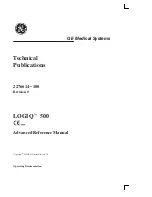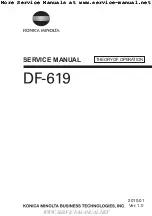
ASSEMBLING INSTRUCTIONS
The Tacx i-Magic trainer is a trainings device that
in combination with the bicycle is used to improve the
physical condition. Before using the Tacx i-Magic, first
read the online manual that can be found on the instal-
lation CD and follow the assembly instructions. Use the
trainer exclusively for purposes mentioned in the manual.
If the i-Magic is used for purposes other than those
mentioned in the manual, a save use of the device can
not be guaranteed.
Assembling the trainer
The i-Magic' CycleForce frame is suitable for use with
racing, hybrid and mountain bikes with a wheel diameter
of 610 tm 720 mm. The following steps show how to
assemble and adjust the trainer.
1 Unfold the trainer frame and set it on a flat surface.
Squeeze handle
E
in fully to fold the frame in or out (fig.1).
2 Slide feet
A
into the frame tube (fig.1).
Care: Turn the feet into their correct positions before
fully pushing them into the frame tube (fig.2).
3 Assemble 2 rubber rings
G
and part
K
to handle
H
. Then
assemble the complete handle to the frame (fig.1).
4 Shove electro brake
I
into part
K
of the handle (fig.3 & 4).
5 Assemble the brake and turn bolt
J
until the mag
unit is firmly tightened but it should still be able to move.
6 Replace the quick-release skewer on the rear wheel with
the skewer
X
supplied by Tacx. This assures ideal clamp
fitting and stability. Place the bike in the trainer and adjust
the wing bolt
L
of the trainer, so that the speed tension
clamp
M
will close without forcing.
Forcing could cause damage!
7 Fix wing bolt
L
by tightening wing nut
N
.
8 With handle
H
the roll of the brake unit can be moved to
and from the tire of the bike (fig.5 and 6). When handle
H
has been folded, knob
O
can be used to regulate the
pressure of the roll against the tire. Make sure the roll is
firmly placed against the tire so that slipping of the tire is
not possible.
Alteration in mounting of bicycle with different
wheel diameter
Before assembling the complete handle to the frame, see
nr. 5 of the instructions, you need to place the heightening
or extension pieces.
- Wheel diameter 610 - 640 mm: assemble heightening
piece
W
with 4 bolts, nuts and rings (fig.7).
- Wheel diameter 690 - 720 mm: assemble extension piece
Z
(fig.8).
Connecting the i-Magic USB Interface
After placing the bike in the trainer, you can connect the
i-Magic USB Interface and the adapter as follows:
1 Assemble the i-Magic USB Interface using the two rubber
clamps
P
on the handlebars (fig.9).
Make sure that the USB cable, connecting the interface
with the computer, is channelled between the interface
and handlebars (fig.9). This is to prevent the cable from
vibrating out of the interface during cycling. Do not con-
nect the USB cable on the PC until the Fortius software
installation program asks for it.
2 Place the small magnet in front of the cadence
Q
on the
inside of the left crankshaft (fig.10).
3 Assemble the cadence sensor
R
on the bottom of the
left-hand rear chain-stay. Make sure the sensor is level
with the magnet, with a distance of approximately 3 mm
between the magnet and the sensor.
4 Connect cadence sensor
R
with electromagnetic brake
I
(fig.1 & 10).
5 Then connect with cable
T
the i-Magic USB Interface
with the electromagnetic brake
I
(fig.1 & 9)
6 Place the plug in the power point.
Make sure that the cables run freely from the back
wheel and pedal so they can not be hit during cycling.
Perspiration and humidity could damage the printer
plate in the computer and adapter. Do not use the
i-Magic in humid spaces. This will prevent unneces-
sary damage. Incorrect use and/or improper mainte-
nace will invalidate the warranty.
Attention!
-
While in use, the wheel of your bike and the flywheel of
the brake system will be spinning at high speed. For this
reason keep children safely away from the i-Magic.
-
The electromagnetic brake and the adapter can never get
overheated during high performance. However, the
housing can become pretty hot in case of long and intensive
use. After use, always allow the motor and adapter to
cool down before touching these.
-
Fold the unit with handle
H
after usage and allow the
unit to cool off before touching it (fig. 5 & 6).
-
Never brake abruptly while using the i-Magic. When the
brakes are applied to the rear wheel, the flywheel keeps
on turning. This results in unnecessary wear and tear to
the rear tyre and the rubber roller.
-
Before using the i-Magic, after unfolding the trainer,
check to see that grip
E
has fully returned to its original
position. This will prevent damage to the frame.
-
Make sure that the electromagnetic brake and adapter
can not fall or struck during assembly and use. This could
result in irreparable damage.
-
Never open the unit of the i-Magic.
-
Make sure that the tyre is well inflated (at least six bar).
-
ATB tyres should preferably have completely or partially
smooth profiles. Rough profiles can cause noise and tyre
slippage.
-
Regularly check to see whether the bolts and nuts of
the trainer are tight.
-
Always place the trainer with the bike on a solid, flat
surface.
MONTAGEANLEITUNG
Der Tacx i-Magic ist ein Trainingsgerät, das in Verbindung
mit einem Fahrrad zur Steigerung der körperlichen
Leistungsfähigkeit eingesetzt wird. Bevor Sie den Tacx
i-Magic das erste Mal benützen, lesen Sie sich die Online-
Gebrauchsanleitung aufmerksam durch. Sie finden die
Anleitung auf der Installations-CD. Bitte verwenden
Sie den Trainer ausschließlich für die in der Anleitung
beschriebenen Zwecke. Dadurch wird Ihnen Sicherheit
im Umgang mit diesem Gerät garantiert.
Montage des Trainers
Der i-Magic CycleForce-Trainer eignet sich standard-
mäßig für Rennräder, Trekking-Räder und Mountainbikes
mit einem Laufraddurchmesser zwischen 610 und 720 mm.
Der Trainer muss nur einmal aufgebaut und eingestellt zu
werden; hierzu gehen Sie folgendermaßen vor:
1 Den ausgeklappten Trainerrahmen auf einen festen und
ebenen Untergrund stellen. Der Rahmen lässt sich ein-
bzw. ausklappen: Drücken Sie dazu Handgriff
E
fest
zusammen (Abb.1).
2 Die Füße
A
in die Rohrenden des Rahmens schieben (Abb.1).
Bitte beachten Sie: Bevor Sie die Füße komplett in die
Rohrenden des Rahmen schieben, müssen diese in die
richtige Position gebracht werden (Abb.2).
3 Befestigen Sie die zwei Gummiringe
G
und den Bolzen
K
an dem Hebel
H
. Der so vorbereitete Hebel
H
läßt sich
nun am Rahmen des Heimtrainers anbringen (Abb.1).
4 Schieben Sie nun die Wirbelstrombremse
I
über den
Bolzen
K
des Hebels (Abb.3 & 4).
5 Montieren Sie die Bremse und drehen Sie die Schraube
J
so fest, daß sich die Bremse noch justieren lässt.
6 Tauschen Sie den Schnellspanner Ihres Hinterrades gegen
die mitgelieferte Tacx- Befestigung
X
aus. Hierdurch wird
eine optimale Klemmkraft und Stabilität gewährleistet.
Setzen Sie das Fahrrad in den Trainer und stellen Sie die
Flügelschraube
L
so ein, daß sich der Schnellspanner
M
ohne Kraftaufwand schließen lässt.
Wenden Sie keine Gewalt an, Sie könnten Schäden
verursachen!
7 Sichern Sie die Flügelschraube
L
durch Festdrehen der
Flügelmutter
N
.
8 Mit dem Hebel
H
lässt sich die Rolle der Bremse gegen
den Reifen des Fahrrades klappen (Abb.5 & 6). Ist der
Hebel
H
zugeklappt, kann man nun über den Knauf
R
den
Druck der Rolle auf den Reifen des Hinterrades einstellen.
Achten Sie darauf, daß die Rolle straff gegen den Reifen
drückt, um ein Durchrutschen des Reifens während des
Trainings zu vermeiden.
Montageanpassung für Fahrräder mit einem
anderen Laufrad-Durchmesser
Bevor die komplette Hebeleinheit an den Rahmen montiert
wird (siehe Punkt 5), müssen die Kunststoff-Verlängerungs-
Platten befestigt werden.
-
Raddurchmesser 610-640 mm: befestigen Sie die Platten
W
mit 4 Schrauben, Muttern und Ringen. (Abb.7).
-
Raddurchmesser 690-720 mm: befestigen Sie die Platten
Z
(Abb.8).
Anschließen i-Magic USB Interface
Nachdem Sie Ihr Fahrrad in den Heimtrainer eingespannt
haben, schließen Sie den i-Magic Interface und den
Adapter für die Wirbelstrombremse wie folgt an:
1 Befestigen Sie den i-Magic USB Interface mit Hilfe der
beiden Gummiklemmbänder
P
am Lenker (Abb.9).
Bitte beachten Sie, dass das USB-Kabel
Y
, das den
Computer mit dem Interface verbindet, zwischen dem
Interface und dem Lenker verlegt wird (Abb.9). Dadurch
vermeiden Sie, dass sich das Kabel während des
Radfahrens durch Vibrationen aus dem Interface löst.
Schließen Sie das USB-Kabel erst dann an Ihren PC an,
wenn Sie das Fortius-Installationsprogramm dazu
auffordert.
2 Befestigen Sie den kleinen Trittfrequenzmagneten
Q
an
der Innenseite der linken Tretkurbel (Abb.10).
3 Befestigen Sie den Magnetsensor
R
für die Trittfrequenz-
messung an der Unterseite des linken Hinterbaus, und
zwar so, dass sich der Sensor in Höhe des Magneten
befindet und dabei von diesem ungefähr 3 mm entfernt ist.
4 Schließen Sie nun den Trittfrequenzsensor
R
an den
Wirbelstrombremse
I
an (Abb.1 & 10).
5 Stecken Sie jetzt den Kabel
T
in der i-Magic Interface und
der Bremse
I
(Abb.3 & 9).
6 Stecken Die den Netzstecker in eine Steckdose.
Bitte beachten Sie, dass die Kabel so verlegt werden,
dass sie während des Radfahrens nicht vom Hinterrad
oder den Pedalen berührt werden.
Schweiß und Kondenswasser können die Leiterplatte im
Interface und im Adapter angreifen. Benutzen Sie den
i-Magic nicht in feuchter Umgebung, dadurch vermeiden
Sie unnötige Beschädigungen. Bei unsachgemäßem
Gebrauch und/oder falscher Pflege erlischt der
Garantieanspruch.
Bitte beachten Sie!
-
Das Rad dreht sich während des Radfahrens sehr schnell.
Achten Sie deshalb darauf, dass Kinder einen ausreichen
den Sicherheitsabstand einhalten.
-
Das Gerät kann auch bei extremer Belastung nicht über-
hitzt werden. Bei ständigem, intensiven Gebrauch kann
das Gehäuse der Bremse heiß werden. Berühren Sie es
nicht kurz nach Gebrauch.
-
Klappen Sie die Wirbelstrombremse mit dem Hebel
H
nach Gebrauch vom Reifen weg und lassen Sie das
Schwungrad abkuhlen. (Abb. 5 & 6).
- Bremsen Sie beim Fahren auf dem Trainer nie abrupt ab.
Das Rad dreht sich dabei weiter, der Hinterreifen rutscht
durch und würde dadurch unnötig verschleißen.
-
Prüfen Sie, bevor Sie den i-Magic benutzen, ob der
Handgriff
E
nach dem Aufklappen des Trainers vollständig
zurückgefedert ist. Hiermit wird eine Beschädigung des
Rahmens verhindert.
- Sorgen Sie dafür, dass die Bremse bei der Montage nicht
auf das Schwungrad fällt. Dadurch könnte in der Achse
eine Unwucht entstehen, die Schwingungen verursacht.
- Achten Sie darauf, daß der Reifen stark aufgepumpt ist
(mindestens 6 bar).
- Beim MTB empfehlen wir einen ganz -oder fast ganz-
glatten Reifen, denn Reifen mit Profil machen zu viel Lärm
und sie neigen eher dazu durch zu rutschen.
- Kontrollieren Sie regelmäßig, ob alle Schrauben und
Muttern des Trainers noch gut fest sitzen.
MONTAGE INSTRUCTIES
De Tacx i-Magic is een trainingsapparaat dat in combinatie
met een fiets en een PC gebruikt wordt voor het verbe-
teren van de lichamelijke conditie. Lees voordat je de Tacx
i-Magic gaat gebruiken eerst de online handleiding die te
vinden is op de installatie CD. Gebruik de trainer uitsluitend
voor de in de handleiding beschreven doeleinden
om veiligheid te garanderen.
Montage Trainer
Het CycleForce frame van de i-Magic is geschikt voor
race- en hybride fietsen en mountainbikes met wieldia-
meter 610 t/m 720 mm. Het monteren en afstellen van
de trainer is éénmalig en gaat als volgt:
1 Plaats uitgeklapte trainerframe op een stevige en vlakke
ondergrond. Het frame is in- en uit klapbaar door greep
E
volledig in te knijpen (fig.1).
2 Schuif voeten
A
om de buis van het frame. (fig.1).
Let op! Draai, voordat de voeten geheel in de buis van
het frame gedrukt worden, deze in de juiste positie (fig.2).
3 Monteer 2 rubber ringen
G
en afstelbus
K
aan hendel
H
en monteer de complete hendel aan het frame (fig.1).
4 Schuif elektrorem
I
om afstelbus
K
van de hendel (fig.3 & 4).
5 Bevestig elektrorem met bout
J
en draai deze zodanig
vast dat de rem nog kan bewegen.
6 Vervang de blockage van het achterwiel van de fiets door
de meegeleverde Tacx blockage
X
. Dit garandeert
optimale klempassing en stabiliteit. Plaats vervolgens de
fiets in de trainer en stel vleugelbout
L
van de trainer zo
af dat snelspanklem
M
zonder al te veel kracht gesloten
kan worden.
Forceren kan beschadigingen veroorzaken!
7 Fixeer vleugelbout
L
door vleugelmoer
N
naar binnen toe
vast te draaien.
8 Met hendel
H
kan de motorrem in- en uitgeklapt worden
tegen de band van de fiets (fig.5 en 6). Wanneer hendel
H
is ingeklapt kan met afstelknop
O
de druk van de rol
tegen de band worden afgesteld. Let er op dat de rol
stevig tegen de fietsband wordt gedrukt zodat slippen
tijdens het fietsen niet mogelijk is.
Wijziging montage voor fietsen met afwijkende
wieldiameter
Voordat de complete hendel aan het frame gemonteerd
wordt, zie punt 5 van de instructies, dienen verhoog- of
verlengstrips bevestigd te worden.
- Wieldiameter 610 - 640 mm: bevestig verhoogstrips
W
met 4 bouten, moeren en ringen.(fig.7)
- Wieldiameter 690 - 720 mm: bevestig verlengstrips
Z
(fig.8)
Aansluiten i-Magic interface
Sluit na het plaatsen van je fiets in de trainer de i-Magic
interface en de adapter van de motorrem als volgt aan:
1 Monteer de i-Magic interface met behulp van de twee
rubberen klembandjes
P
op het stuur van je fiets (fig 9).
Let op dat de USB kabel
Y
, die de interface met de com-
puter verbindt, tussen de interface en het stuur geleidt
wordt (fig.9). Dit om te voorkomen dat de kabel tijdens het
fietsen uit de interface lostrilt. Sluit de USB kabel nog
niet aan op de PC, maar doe dit wanneer het Fortius
software installatie programma hierom vraagt.
2 Plaats het magneetje voor de cadans
Q
aan de binnenkant
van de linker crank (fig.10).
3 Monteer de cadanssensor
R
aan de onderkant van de
linker liggende achtervorkschede. Zorg er voor dat de
sensor zich op hoogte van de magneet bevindt met een
afstand van ongeveer 3 mm tussen magneet en sensor.
4 Steek de kabel van sensor
R
in de elektromagnetische
rem
I
(fig.1 & 10).
5 Verbindt vervolgens met kabel
T
de i-Magic Interface
met de elektromagnetische rem
I
(fig.1 & 9).
6 Steek de stekker in het stopcontact.
Let op dat de kabels zodanig lopen dat deze tijdens het
fietsen niet kunnen worden geraakt door het achterwiel
en het pedaal.
Transpiratievocht en condens kunnen de printplaat in
de interface aantasten. Gebruik de interface niet in
vochtige ruimtes. Dit voorkomt beschadigingen. Bij
onjuist gebruik en/of onderhoud vervalt de garantie.
Let op!
-
Tijdens het gebruik van de trainer, draait het achterwiel
van de fiets met een hoge snelheid. Houd daarom kinde-
ren op een veilige afstand van de trainer.
-
Testen hebben uitgewezen dat de unit bij extreme
prestaties nooit oververhit kan raken. Wel kan bij langdu-
rig en intensief gebruik de omhulling van de elektromag-
netische rem behoorlijk warm worden. Laat de rem na
gebruik altijd even afkoelen voordat je deze aanraakt.
-
Klap de elektromagnetische rem wanneer de trainer niet
gebruikt wordt met hendel
H
los van de fietsband (fig. 5
en 6).
-
Rem nooit abrupt tijdens het trainen. Bij het remmen op
het achterwiel draait het vliegwiel door waardoor onno-
dige slijtage van de rol en de achterband wordt veroor-
zaakt.
-
Controleer voordat de CycleForce gebruikt gaat worden,
of na het uitklappen van het frame, greep
E
volledig is
teruggeveerd. Dit om beschadigingen aan het frame te
voorkomen.
- Zorg er voor dat de elektromagnetische rem tijdens het
monteren niet valt. Er zou onbalans kunnen ontstaan die
trillingen veroorzaakt.
-
Open nooit de elektromagnetische rem om beschadigin-
gen te voorkomen.
- Zorg er voor dat de band goed hard is opgepompt
(minimaal 6 bar).
- ATB-banden met geheel of gedeeltelijk glad bandenpro-
fiel hebben de voorkeur. Een ruw profiel veroorzaakt
lawaai en slippen van de band.
-
Controleer regelmatig of de bouten en moeren van de
trainer nog goed vast zitten.
-
Plaats de trainer tijdens het fietsen altijd op een stevige
vlakke ondergrond.
A
E
M
X
L
N
I
K
G
H
J
NL
13 mm (2x)
1
DE
GB
9
W
W
H
Z
Z
H
7
8
O
H
H
5
6
1
0
.
6
6
4
1
T
x
1
2
0
.
6
6
4
1
T
x
1
3
0
.
6
6
4
1
T
x
1
4
0
.
6
6
4
1
T
x
1
7
0
.
0
6
2
1
T
x
4
9
1
.
1
6
4
1
T
x
4
3
0
.
9
5
4
2
T
x
4
2
0
4
1
T
x
1
1
1
.
8
0
4
1
T
x
1
2
0
.
0
1
4
1
T
x
1
6
0
.
0
1
4
1
T
x
1
r
e
n
i
a
r
t
ti
k
g
n
it
ti
F
0
1
9
1
T
t
e
s
e
l
b
a
C
7
4
9
1
T
t
e
s
r
e
t
p
a
d
a
ti
k
g
n
it
ti
F
6
6
4
1
T
1
0
.
7
4
9
1
T
x
1
3
0
6
1
T
x
1
x
1
4
0
6
1
T
1
0
.
5
6
4
1
T
x
2
8
0
.
5
6
4
1
T
x
2
9
1
.
1
6
4
1
T
x
2
2
2
.
0
1
9
1
T
x
1
T1902.10 USB Cable
T1424
x
2
R
Q
Q
R
10
A
2
K
3
K
4
T1415 Axle nuts M10 x 1
T1416 Axle nuts 3/8
(Shimano Nexus)
For bicycles without drop-out hubs.
Accessories
T190025_Manual_iMagic#37B0F.qxd 08-08-2007 16:33 Page 1
T
Y
P




















